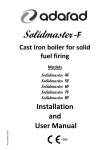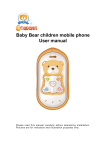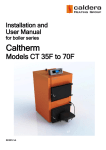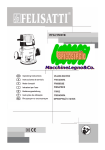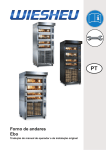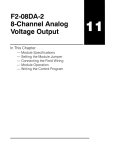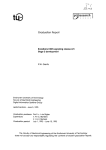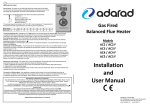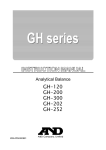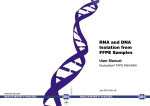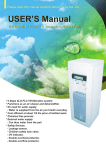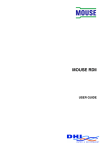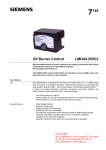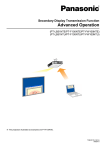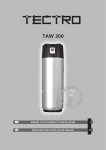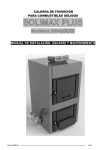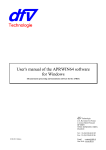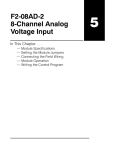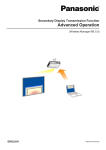Download ADARAD DUNATECH 2012 KULLANMA
Transcript
NEW DUNATECH 2012 Cast Iron Boiler for Solid Fuel Firing Installation and User Manual 1783 CALOR SRL Str. Progresului nr. 30-40, sector 5, Bucuresti tel: 021.411.44.44, fax: 021.411.36.14 www.calorserv.ro - www.calor.ro 3 Thank you for purchasing Dunatech boiler. Please read this manual carefully before installation and operation of your product, and keep it during the whole operation life. Do not touch or interfere any part of the product other than those allowed. The installation, maintenance and service of this boiler requires skilled technicians. For the installation of the boiler and proper room selection, installation of water circuit, chimney design, this manual and mandatory regulations must be considered. Dunatech is a cast iron sectional boiler for solid fuel firing which is constructed with new patent secondary air system principle providing a clean burn and low emissions . It is designed for hot water heating systems, should not be used for direct sanitary water supply. Thanks to its cast iron body design with flexible casting technology, your boiler is quite resistant to corrosion that could be caued by low return water and flue gas temperatures respectively, and high water content of the fuel being charged. Dunatech boiler will give higher heating surface area and water efficiencies among similar products in the market, as well as lower pollutants and flue gas temperatures released from the chimney. Those features will result in save in energy usage. Dunatech boiler can be used either in forced or natural water circulation systems thanks to its large waterways inside the boiler and medium sized delivery and return connections. You can fire different solid fuels whose specifications are given further in this manual. As calorific values of solid fuel types differ from each other, the output power of the boiler will vary between a maximum and a minimum range specified. Delivery term Dunatech boiler is delivered in two packges: 1. Boiler pack, holds cast iron body assembled and tested at the factory. 2. Accessory pack, holds sheet metal jacket, body insulation, thermostatic controller, primary air damper, cleaning b us , as ape , fuel ue po poker. e brush, ash sc scraper, Optional accessory: A safety heat exchanger kit is delivered upon special request. This kit holds an copper heat exchanger against excessive heat accumulation inside the boiler, a safety valve to activate the heating system at high water temperatures, and auxillary accessories for installation. Whether the hydraulic circuit is open vented or pressurised, this safety heat exchanger system should be utilized within the system for meeting the regulations of related European standard for this product, as well as the safety of whole heating installation and the boiler itself. Safety warnings Please, follow the safety instructions before installation and operation of Dunatech boiler: * Dunatech boiler must be connected to an appropriate chimney whose construction complies with the instructions given further in this manual, and mandatory regulations.The chimney must perform the requested draft values for related boiler model. Your boiler should not be fired unless the chimney connection is made, and there is enough draft for combustion. * Always allow enough amount of fresh air in the boiler room. Refer to the instructions for room arrangement. * Do not install the boiler in a space, shared or used by people, or in a place with direct openings to a living room. * The boiler must be installed in an open vented hydraulic circuit unless the hydraulic circuit is equipped with safety heat exchnager kit according to the directions given further in this manual. * Do not drain water in hydraulic circuit unless in case of maintenance or risk of freezing. 15% of anti-freezer should be added to hydraulic circuit to avoid freezing danger. In case of cast iron radiators, the hydraulic circuit should be washed * Do not feed cold water directly to the boiler overheated by any reason. This may result in cracks on boiler sections. * Do not fire boiler with front doors open. In case operation with fanr, never open front doors without switching the fan off. * The system design must provide water flow rates commensurate with boiler output and the temperature difference between flow and return should not exceed 20 C. * Any irregular electricity installations in boiler room should be replaced * Water levels should be checked regularly and any leakages corrected in order to keep system water make-up to a minimum, because excessive make-up will lead to salt deposits forming in the boiler waterways causing local overheating and damage to the boiler sections. * The quality of water is important. The recommended hardness of water: 1-3 mol/m3 (1 mol/m3=5.6 dH), PH:8-9.5 * The boilers should be installed directly onto a smooth level floor of non-combustible material. It is recommended that the hight of the plinth should be at least 50 mm, and sized larger than the dimensions of casing of the boiler. This plinth is kept the boiler from water on the floor. * If the boiler is going to be installed in an old heating system, the system should washed away and cleaned from any particules before Dunatech is attached 4 TECHNICAL DATA Model Number of sections Fuels Output range Net weight Water content Combustion chember volume Fuel loading volume Max fuel loading height Temperature control range Maximum operating temperature Minimum return temperature Safety system activated at Maximum operating pressure Flue outlet diameter Water flow/return connections Height (H2) Width (A) Length (L) Fuel type Output Efficiency Boiler class Maximum fuel charge Combustion period at max load Requested fuel parameters Average flue gas temperature Flue gas mass flow Required draft at chimney Waterside resistance for ∆t=20 °K Waterside resistance for ∆t=20 °K (with safety heat exchanger) A Average content of CO to %10 O₂ f CO %10 O Fuel type Output Efficiency Boiler class Maximum fuel charge Combustion period at max load Requested fuel parameters Average flue gas temperature Flue gas mass flow Required draft at chimney Waterside resistance for ∆t=20 °K Waterside resistance for ∆t=20 °K (with safety heat exchanger) Average content of CO to %10 O₂ DUNATECH 3 3 DUNATECH 4 4 kW kg lt dm3 dm3 cm °C °C °C °C bar mm R mm mm mm 14 ‐ 17 135 22 30 20 20 ‐ 27 165 28 42 28 515 615 kW % No kg h 12‐14. 72 2 9 18‐20 74 2 13.5 °C g/s mbar mbar mbar 280 6.6 0.15‐0.2 0.13 0.48 DUNATECH 5 DUNATECH 6 5 6 Wood logs, hard coal 27 ‐ 34 33 ‐ 41 195 225 34 40 55 68 36 45 27 30 to 90 100 50 (recommended) 95 3 160 1 1/2" 950 490 715 815 DUNATECH 7 7 DUNATECH 8 8 38 ‐ 46 256 46 81 53 42 ‐ 51 286 52 94 62 915 1015 34‐38 75 2 27 42‐44 74 2 31.5 260 22.9 0.15‐0.27 2.92 6.53 260 28.9 0.15‐0.28 4.63 10.14 43‐46 75 2 32 48‐51 74 2 36 260 33.8 0.15‐0.27 3.90 8.61 260 41.5 0.15‐0.28 5.84 12.66 Wood logs 275 10.2 0.15‐0.22 0.51 1.36 25‐27 75 2 18 30‐33 76 2 22.5 2 to 4 hour Maximum water content 20% Maximum cross section 10 cm x 10 cm Average calorific value 17.000 ‐ 20.000 kJ/kg 240 240 13.9 18.1 0.15‐0.25 0.15‐0.26 1.03 1.81 2.50 4.18 900‐1200 900 1200 mg/Nm³ /N ³ Hard coal kW % No kg h 15‐17 72 2 13 °C g/s mbar mbar mbar 280 10.1 0.15‐0.2 0.24 0.74 mg/Nm³ 24‐27 74 2 18 275 15.5 0.15‐0.22 0.76 1.90 31‐34 75 2 23 38‐41 76 2 27 4 to 6 hour Maximum water content 15% Average size between 30 to 60 mm Average calorific value 26.000 ‐ 35.000 kJ/kg 240 240 20.8 26.9 0.15‐0.25 0.15‐0.26 1.46 2.47 3.41 5.59 1800‐2200 5 INSTALLATION Handling of the product Dunatech is a heavy product, and care should be taken when carrying the boiler to the room where it is going to be installed. The total weight of each boiler is indicated in Technical data section. Carrying equipments of product must be of enough capacity to support that weight. Room selection Dunatech boiler must be installed in an individual boiler room particularly organized for heating. The boiler room should be of enough volume for installation, firing, and maintenance of the boiler. There should be enough fresh air circulation for combustion, the chimney design must ensure an dequate draught for related boiler type, and must comply with construction criteria given further in this manual and in mandatory regulations. Your boiler must never be installed in open spaces or balconies, in spaces occupied by people like kitchen, living room, bathroom, bedroom, in spaces where there are explosive and combustible materials. The boiler room should have air ventillation holes through outside to let fresh air in. One air ventillation hole must be built maximum 40 cm below the level of room ceiling, the other must be built maximum 50 cm above the floor level. These ventillation holes should always be kept open. The upper hole should be at least 40x40 cm in size, the lower hole at least 30x30 cm. All hydraulic and electrical circuits must be arranged by authorized staff in accordance with mandatory regulations specified by legal organizations. Solid fuels should be stored by keeping minimum 800 mm distance from the boiler. We recommend you to keep the solid fuel in another room. Dunatech boiler should be installed on a concrete plinth made of a fireproof material. For minimum sizes of the plinth following table should be referred Model Plinth height (mm) Plinth width (mm) Plinth length (mm) DUNATECH 3 DUNATECH 4 DUNATECH 5 DUNATECH 6 DUNATECH 7 DUNATECH 8 50 600 385 490 595 700 805 910 Clearances around boiler At least the following clearances should be achieved around the boiler Circulation pump We recommend to build a forced water circulation system accompanied with a sufficient pump. To size the pump, refer the boiler water side resistance level given in Technical data section, taking the other resistances created by the hydraulic circuit into account. Refer to the system diagrams given further in this manual to find the right position of the pump wtithin the hydraulic circuit. Your boiler does not switch the pump on and off automatically. That is why, you should keep the pump switched on, when the boiler temperature is above the cold water temperature or there is fuel firing inside the combustion chamber. Never switch the pump off unless the fire is completely put off. Never let the boiler water temperature reach high values sharply with leaving the pump switched off. In this case, the instant cold water delivey to the very hot boiler may result in cracks on boiler body due to high thermal energy. 6 Hydraulic circuit Open vented hydraulic circuit Dunatech boilers are preferred to be installed in a hydraulic circuit with an open type expansion tank in accordance with the following schemes. The circulation pump in the circuit should be installed on the return line to boiler in order to prevent the system from excessive thermal stresses and overheating during electricty cuts off: Open type expansion tank must be installed at the heighest level of whole hydraulic system. No globe valves must be installed on delivery and return safety lines between boiler and expansion tank. Safety lines should be attached to inlet and outlet lines of boiler at points as close as possible to boiler, using the shortest possible vertical way between expansion tank and boiler. If "h" distance in above scheme can not be arranged within the construction of present system, the circulation pump must be installed on delivery line from boiler. "h" distance refers to the head pressure of circulation pump at operated speed. If "h" distance can not be arranged in a system with circulation pump on return line, there will be air suction from radiators at the highest level of system. In this case,the other scheme where pump is installed on the delivery line must be referred. A hydrometer must be installed on the delivery line to monitor the pressure level and to check if there is any leakage. The hydrometer should be purchased separately, and should be installed at the same level with the boiler outlet. A by-pass line should be installed between inlet and outlet connections of circulation pump in order to allow maximum water delivery when circulation pump is switched off and there is fuel fired in boiler, particularly during sudden electricty cuts off. The optional safety heat exchanger kit is highly recommended to be used with the boiler, even in the case of open vented systems to protect the boiler and the whole heating circuit against excessive heat accumulation. For installation of this kit, please refer to the next section 7 Design parameters for open expansion tank Expansion tank protects the hydraulic curcuit from excessive temperatures by allowing free volume for expanding water and keeping the water pressure from exceeding the static pressure. Expansion tank may be built in rectangular prism or cylindirical shape, may be installed in horizontal or vertical position in the system. Safety lines between boiler and expansion tank should be installed by an increasing slope up to tank. Following scheme shows the maximum vertical distances between safety lines and boiler: The size of expansion tank can easily be calculated regarding the total expanding water contained in whole system. If the total volume of water in the system is Vs; the volume of expanison tank should be: Vg= 8.Vs / 100 (in liters) SV: Deliver safety line SR: Return safety line In more practical way, just using the nominal heat output of boiler (Qk) in terms of kW, the volume of expansion tank can be caluculated as; Vg= 2,15.Qk (in liters) Sizing safety lines between boiler and open expansion tank Size of the safety line for delivery Size of the safety line for return where Qk is the boiler output in kW. d SV = 15 + 1,5. Qk d SR = 15 + Qk (mm) (mm) 8 Pressurised hydraulic circuit Dunatech boiler can be installed in a pressurised heating system if following scheme is referred with addition of the safety heat exchanger kit which is supplied as a separate accessory. maximum pressure: p essu e 3 ba bar Safety heat exchanger includes the following items: 1. Safety heat exchanger (copper serpantine integrated with outlet stub pipe) 2. Safety valve 3. Auxillary fittings To install the safety heat exchanger system: 1. Remove the existing outlet stub pipe with flange of the boiler 2. Install the safety heat exchanger to the delivery port on the rear section 3. Attach the hot water delivery line to the port on top of the flanged pipe of the safety heat exchanger 4. Remove the bulb of boiler thermometer from the front section, and insert it into the pocket on the flanged pipe of the safety heat exchanger 5. Attach the safety valve on cold sanitary water line to the safety heat exchanger as shown in above scheme. 6. Insert the couple thermostat bulb of the safety valve inside the pocket on the front section of the boiler. 7. Drain the hot sanitary water outlet of the safety heat exchanger. If the boiler water temperature exceeds 95 oC, thermostat of the safet valve lets cold sanitary water flows through the serpantine of the safety heat exchanger. Serpantine with cold water circulating inside cools down the boiler water temperature. When the boiler temperature decreases below the safe degree, safety valve shuts the cold sanitary water circulation, and the boiler goes back to normal operation. The valves on the sanitary connections of safety heat exchanger must always be kept open. Dunatech can only be used with origial safety heat exchanger kit which is tested and approved for each boiler model. Cold water must never be delivered directly to boiler inlet in order to solve overheating porblems as this will result in serious damage on boiler body. That application will end the warranty of the boiler. 9 Chimney connection Dunatech boiler must be connected to an individual chimney that will provide at least the minimum draught requested. The flue canal between the boiler and the chimney should be insulated using a glass wool material. The flue canal to chimney and chimney must be made of steel or an equivalent material that can be used at temperatures around 400 C All connections on the flue system must be sealed in order to perform a good combustion and efficiency. The flue canal must be connected to the chimney using the shortest way and in accordance with the dimensions given in the following scheme. Horizontal connections and equipments that will increase the pressure loss such as elbows should be avoided A vertical single steel piping should not be used as a chimney. Chimney must be made of one internal and one external surface. External surface may be made of steel or brick. For internal surface stainless steel chimney elements should be preferred against corrosion. The space between internal and external surfaces of the chimney should be insulated to prevent condensation in flue gasses. At the lowest level of chimney, there should be a cleaning cover which is made of steel, and sealed for any leakage. The length of flue canal between the boiler and the chimney should not exceed ¼ height of chimney. The size of flue canal and chimney should not be less than the size of the boiler flue gas outlet connection. For the total eg ta and d tthe e minimum u internal te a d diameter a ete o of tthe e cchimney, ey, height following diagram should be referred in respect with the boiler output power, if otherwise stated in mandatory regulations. The heighest level of chimney outside should be in accordance with the dimensions given in following sketch so as to minimize the harmful effect of flue gasses on ambient, and to improve the harmful effect of flue gasses on ambient, and to improve draught in chimney. 10 ASSEMBLY INSTRUCTIONS Numbers between paranthesis refer to bubble numbers in exploded drawing of the boiler that can be found at the end of this manual Dunatech boiler should be installed on a concrete plinth made of a fireproof material. We recommend you to place two pieces of steel sheetmetals underneath the front and rear elements of the boiler preferably with the dimensions H: 3 mm x L: 500 mm x D: 200 mm. Follow the instructions to finish the assembly of boiler accessories supplied together with the boiler 47 37 47 48 1. Fit the thermo-regulator into the port on the front section Use linen fibres against water leakage. Position the thermo-regulator with its side for arm installation facing towards the front element of the boiler 2. Place body insulation (48) squarely onto the boiler body. Cut a piece out from the front side to create room for the thermo-regulator. Place rear insulation board onto rear section as seen in the pictures above. 3. Fit four pieces of M10 nuts (A) onto free ends of the four tie rods at the rear side of the boiler as shown in the following picture. These nuts will be used to lock side panels after their assembly. 4. Fit left hand side panel (38) by passing its rear bend over upper and lower tie rods at the end. First secure the left hand side casing to the front element of the boiler by using three pieces of M8x15 fillester countersunk head bolts (H) and A8.4 flat washers (F) as shown in the pictures above. 5. At the rear, secure the rear bend of left hand side panel, locking between two M10 nuts and A11 flat washers (B) as shown in the following picture. 3 5 39 A 38 A B 39 HF H-F 11 6. Likewise, fit the right hand side panel (39). When you work at the front side of the boiler, loose three M8 nuts (G) that are used to secure front door hinges (28, 29) a little, drive the front bend of the panel through the free space behind A8.4 flat washer (F). After driving the panel to right position secure it by screwing the same M8 nuts. You can set the hinges by loosing or screwing to provide that the doors are closing properly. 39 38 G-F A B 28 7. Place top panel (40). Before securing top panel, first fit the thermometer (43), drive the capillary of the thermometer through the hole on the top panel, and attach its sensing bulb inside the pocket on the front element of the boiler. 8. If the top is not fitted squarely between two side panels, loose the nuts securing the side panels, and re-adjust the positions of the side panels to match the top panel. Secure the side panels again. Fix the front panel (41) by two pieces of special centering pin M4 (30-S-R) and S4.2x9.5 self tapping screws (L) to side panels. Fix the rear bend of the top panel to both side panels by the same screws (see following pictures) 9. Fit primary air damper (19) on the lower front door (17) with the help of primary air damper rod (20), and secure it with a help epo of M6 6 nut ut ((D)) as sshown o in tthe e following o o gp picture. ctu e 10. Pass the thermo-regulator arm through the holes on the thermo-regulator and fit this item via its safety screw which is supplied with the original packing of thermo-regulator (note that, if your boiler does not arrive with thermoregulator, please ask your dealer for thermo-regulator and the auxilary items mentioned in this step) 11. Attach the chain (which is supplied within the package of thermo-regulator) to both thermo-regulator arm at the top, and to primary air damper (19) at the bottom. This step will be completed during the first operation of the boiler. Please see the title: "Setting the thermo-regulator (thermostatic controller for combustion air)" 39 40 40 39 L L 39 40 43 12 41 39 30 S 41 R 41 41 39 L D 20 19 50 49 21 13 B 51 A 13. by fixing the rear casing follow the instructions: ― Fit the rear panels as it is seen in the pictures. ― Finally fit the damper onto the rod. please see the following pictures. L 42 14 Safety heat exchanger (optional) The safety heat exchanger is used to save the boiler in case of overheating. In case of electrical cutout, pump defect etc. the boiler water temperature can be overheated. If the boiler water temperature exceeds 95 ºC, thermostat of the safety valve lets cold sanitary water flows through the serpantine of the safety heat exchanger. Serpantine with cold water circulating inside cools down the boiler water temperature. When the boiler temperature decreases below the safe degree, safety valve shuts the cold sanitary water circulation, and the boiler goes back to normal operation. 15 1. Remove the existing outlet stub pipe with flange of the boiler 2. Install the safety heat exchanger to the delivery port on the rear section by four pieces M10X25 bolts. Use gasket supplied with safety heat exchanger to provide sealing. 3. Attach the hot water delivery line to the port on top of the flanged pipe of the safety heat exchanger. 4. Fit the safety valve to the safety heat exchanger with the help of 1/2" nipple and 1/2" - 3/4" hex reducing bushing. Then attach the valve to the main supply water line. Make sure that the direction of the safe valve is right. On the valve there is a arrow that refers main supply water direction. 5. Insert the couple thermostat bulb of the safety valve inside the pocket on the front section of the boiler. 6. Remove the bulb of boiler thermometer from the front section, and insert it into the pocket on the flanged pipe of the safety heat exchanger 7. Drain the hot sanitary water outlet of the safety heat exchanger. 16 OPERATING INSTRUCTIONS Setting the thermo-regulator (thermostatic controller for combustion air) Mechanic type thermo-regulator is mounted on top of front section in vertical position. In vertical operation of thermoregulator, red coloured numbers show the requested heating temperatures. After assembly of thermo-regulator body, place the lifting rod for regulator. Load the boiler and fire. Wait until the boiler temperature reaches 60 C. Set the thermo-regulator to 60 C. Attach one end of thermo-regulator chain to primary air damper. Attach the other end the chain to lifting rod of thermo-regulator, and stretch the chain, leaving 2 mm space between primary damper and air inlet of front door. Pre-firing checks Before the first operation of boiler right after installation, the hydraulic circuit must be ready for operation. To fill an open vented circuit, the valve on start level line from expansion tank is opened, and the circuit is filled with main supply water. During filling the system all valves and accessories on the lines must be checked for leakage. Filling is stopped, when water from start level line is observed, closing the valve on this line. Right after that,the hydraulic pressure is marked on screen of the hydrometer. This will make re-filling operations during heating season much easier, just feeding the system with fresh water until the hydraulic pressure on screen reaches the pre-marked value. Before every firing make sure that; * Boiler and circuit are filled with water, and the hydraulic pressure is in the required range. * All valves on the line (except by-pass lines and start leve line) are in open position. * There is enough draught in chimney. To fill a pressurised circuit, feed the fresh water from main supply line using either the filling/drilling tap connection on the boiler rear sectiion, or the feeding line constructed within the circuit. To purge the air contained in the system, use air relief valves on the hydraulic circuit, on the radiators, and also spring pressure relief valve at boiler hot water outlet. Firing * Set the Kindling. Place firestarters, crumpled newspaper (3 or 4 sheets balled up fairly tightly) on the grate of the boiler. Place small kindling over the paper or starter. The more dry, small kindling you have - the easier and better the fire will start. Crisscross the kindling so there is plenty of air space in between each piece. Wood that is packed too tight will not burn properly. * Set larger wood on top of the kindling, and continue to set larger and larger pieces on top until the fuel exceeds the 1/3 level of the filling chamber. * Ensure that the primary air and chimney dampers are open. Then light the newspaper on the bottom * After first ignition, switch the circulation pump on, and adjust air damper. Set mechanic thermo-regulator to desired temperature. * The fire should be well established within approximately 15 minutes, then filling chamber can be loaded completely but check to make sure that the firelighters have not been extinguished. * Keep the fire going Always keep a “flame” on your fire - a smoking or smoldering fire is a cold and inefficient fire and also produces pollutants and creosote (tar in the chimney) Firing with wood Please follow the recommendations to increase the performance of the boiler: * When firing wood, you can keep the secondary air damper closed, and increase the burning period of the fuel inside the combustion chamber. * If your chimney draught is sufficient you can keep the flue damper on the smokehood 1/2 or 2/3 closed after the first ignition of the wood logs. *If you have low fire or smaller fire bed, you can fully close the air damper Front secondary air OFF Front secondary air ON 17 Firing with hard coal and coke *If you fire hard coal or coke, we recommend you to keep secondary air damper fully open. If your chimney is built enough to ensure an adeqaute draught, you can keep secondary air damper 1/2 closed. *Flue damper on the smokehood should be kept fully open or 2/3 open. *When you have low fire or smaller fuel bed you can decrease the draught by closing the dampers further Stand-by *You can slow-down the combustion by a. Decreasing the set temperature on the thermo-regulator b. Closing the secodary air damper fully c. Closing the flue damper fully Your boiler does not switch the pump on and off automatically. That is why, you should keep the pump switched on, when the boiler temperature is above the cold water temperature or there is fuel firing inside the combustion chamber. Never switch the pump off unless the fire is completely put off. Never let the boiler water temperature reach high values sharply with leaving the pump switched off. In this case, the instant cold water delivey to the very hot boiler may result in cracks on boiler body due to high thermal energy. If the thermo-regulator does not operate properly, shift its setting step by step according to your comfort conditions Lack of chimney draugt If there is lack on chimney draught or there is no draught at the chimney (such as badly built, uninsulated, blocked etc) you may face combustion problems (no fire, excessive smoke, condensation due to cold flue gasses). In this case, e st ct y recommend eco e d you to have a e you your cchimney ey co controlled t o ed by a an e expert, pe t, a and d fix a any y irregularity. egu a ty Your ou bo boiler e has as bee been we strictly designed for natural draught principle, and that is why, chimney installation is vey important. Fuel Fuels must comply with the specifications given in the technical data section. The manufacturer will not be held responsible for the problems due to lack of fuel specifications, use of fuels not suggested for this boiler. 18 HEALTH AND SAFETY INFORMATION Control of substances hazardous to user health For the type of material and where used in Dunatech boiler refer to the following chart 1. PAINTS: General purpose black undercoat High temperature black coating Powder coating 2. INSULATION AND SEALS Rock-wool insulation board Glass-wool insulation board (aluminum backed) Fibre-glass rope and tape Ceramic-fibre board CFC free polyurethane spray/foam Refractory brick Asbestos products 3. SEALANTS Red-lead dye Ceramic/mineral compound gasket (Isoplan/Frenzelit) Water jointing flax Grey paste jointing compound (Unipak (U pa A/S) S) Fire cement Gas jointing compound NOT APPLICABLE Sections Boiler body bottom plate All jackets NOT APPLICABLE Sections Smokehood Front door Between bottom plate and sections Front door NOT APPLICABLE NOT APPLICABLE NOT APPLICABLE Nipples Flanged stub pipes Tappings on sections Inter section joints NOT APPLICABLE NOT APPLICABLE Specific data sheets are available on request from ADARAD for those materials but the following material handling and first aid procedures should in all cases be observed. Paints, sealants, grey paste compound, ceramic-fibre boards 1. These materials contain organic solvents and should be used in a well ventillated area away from naked flames. 2. Do not allow to come into contact with the skin, eyes, inhale or swallow. 3. Use barrier cream or gloves to protect the skin, and goggles to protect the eyes from accidental contact. 4. Small quantities can be removed from clothes or skin with a proprietary paint remover or hand cleaning prdouct. 5. If inhaled, remove sufferer into fresh air, if swallowed clean mouth with and drink fresh water but do not induce vomitting. 6. If in the eye, irrigate the eye with clean water and seek medical attention. Sharp edges Care should be taken when handling sheet metal panels that do not have safety or folded edges Lifting cast iron sections Care should be taken when lifting cast iron sections as they can weigth up to a few hundred kilograms and ADARAD can confirm the weight of each individual section if required Building and servicing the boiler/sections When building the boiler, the section should always be built on a level base capable of supporting the full weight of the boiler and the sections should always be supported on blocks of wood or props when positioning before final bolting up. An unsupported section should never be left unattended. Thermal insulation 1. Avoid contact with skin, eyes or inhaling dust. 2. If cutting insulation then do so in a well ventillated area using gloves to protect the hands, goggles to protect the eyes, and a disposable dust mask 3. If a skin reaction or eye irritation is experienced then discontinue working with the material and seek medical advice. 19 Devices under pressure 1. Avoid contact with the parts of heating system under pressure during operation of boiler. These dangerous parts are such that: Boiler sections Boiler inlet and outlet lines Safety lines Pressure relief devices installed on heating system 2. Never attempt to drain water from heating system when the boiler is being operated 3. Never feed the boiler directly with cold water to cool it down for any reason, when the boiler is hot. High temperature surfaces Avoid contact with parts and surfaces having high temparutares which will be hazardous for human such as: Boiler front door Fire door on the front section Water delivery and return lines (even if isolated), safety lines Flue spigot Connection between flue outlet and chimney Circulator pumps, expansion vessels Boiler room 1. Ensure that the boiler room has an easy access to outside in case of danger in heating system 2. Do not leave the solid fuels and auxillary substances (chips, paper etc) to ignite the boiler, with the distance less than 800 mm from the boiler 3. Do not cover the fresh air openings of the boiler room, as it is very important for the combustion Flue gases 1.There could be a little gas release from the front side of the boiler, when the front loading door is opened. Never b eat e tthis s gas flow. o breathe 2. When adding solid fuel when there is active fire bed inside the combustion chamber, protect your hands and face. If needed wear protective gloves. Firing fuel 1. Do not take the firing fuel out from the combustion chamber while it is still burning 2. Do not try to put the firing fuel off using water or any other liquids. 3. Do not leave the front doors and fire door open when there is fire inside the combustion chamber 4. To slow down or stop the fire, close air inlets, and flue outlets.. 5. Your boiler can only be fired with the solid fuels whose characteristics have been given in Technical data section. Never use any other solid fuel that would be harmfull for boiler section design, any liquid or gaseous fuels. 20 MAINTENANCE AND CLEANING Regular maintenance by qualified staff, strictly in accordance with the manufacturers instructions is essential for the efficient operation of system. Periodic inspections * Check the water level or pressure either in open vented or pressurised systems. The hydrometer must be marked after first filling of the boiler. So water level can be checked regularly. If the water level or pressure is under the level of static pressure or the system set-up, a water make-up is needed. The make-up water should be softened according the local regulations before feeding into the system to prevent corrosion inside the heating circuit and the boiler. * Front doors of the boiler should be checked for properly closing. Fibre-glass ropes must be replaced if necessary. * Check the condition of refractory inside the front section. If it is damaged, you will have higher surface temperatures on front doors. In this case the refractory should be replaced to save energy and prevent further crack. * Check if there is flue gas leakage from the chimney connections of the boiler, and have it fixed if necessary. * Check correct operation of thermo-regulator on top of the boiler. If needed you can slightly shift the setting of thermoregulator for better combustion for your boiler capacity. If air is not enough for combustion, there will be excessive soot formation on heating surfaces, as well as fumes (or odours). So you should let more air re-adjusting the pirmary air damper setting to get richer combustion. If air is too much for combustion, solid fuel will be consumed rapidly. In this case we recommend to reduce air inlet by either primary air, or flue damper on the smokehood. * Check the heat transfer surfaces of cast iron sections. The soot formation will change according to fuel type you use, and the combustion air amount. So if you feel that the outlet water temperature can not reach the usual values with the same conditions, heating surfaces therefore should be cleaned Cleaning of boiler Before cleaning the boiler, switch the pump and other electrical appliances in boiler room off. To clean the boiler: C ea all a heating eat g surfaces su aces using us g the t e brush b us supplied supp ed with t the t e boiler. bo e * Clean * Clean the by-pass holes between combustion chamber and second flue gas passages with supplied fuel poker * Clean the fresh air inlet section at the bottom level of intermediate sections with supplied fuel poker * Collect all soot deposits inside * Remove the disposals. Maintenance Before each heating season we would recommend you to call for the contracted service agent to check the boiler, heating system, electrical connections, and chimney conditions. Do not attempt to carry any maintenance work without getting help from qualified people. Safety heat exchanger *The valves on the sanitary connections of safety heat exchanger must always be kept open. *Dunatech can only be used with origial safety heat exchanger kit which is tested and approved for each boiler model. *Cold water must never be delivered directly to boiler inlet in order to solve overheating porblems as this will result in serious damage on boiler body. That application will end the warranty of the boiler. * Make sure that the valves on the drain valves are open. 32 60 21 EXPLODED VIEW 22 SPARE PART LIST CODE Nr. 2007610493 2007610492 2007610498 2007610491 2007160315 2007610450 2007610451 2007610452 2007610453 2007610454 2007610455 2007610411 2007610412 2007610413 2007610414 2007610415 2007610416 2007603341 2007603339 2007602285 2007610497 2007610403 2002150720 2007609755 2007609691 2007610494 2007610405 2007610488 2007609561 2007609687 2007601926 2007610495 2007610408 2007610575 2007610410 2007610409 2007603004 2007610575 2007610496 2002024520 2007610420 2007603282 2007610422 2007610423 2007610424 2007610425 2007610426 2007610427 1 2 3 4 5 6 7 8 9 11 12 14 15 16 17 18 19 22 23 24 25 26 27 28 29 30 31 32 35 36 37 38 PART NAME DUNATECH FRONT SECTION DUNATECH INTERMEDIATE SECTION (WITHOUT BY-PASSES - WITH TIE PIECE) DUNATECH INTERMEDIATE SECTION (WITH BY-PASSES - WITHOUT TIE PIECE) DUNATECH REAR SECTION NIPPLE TIE ROD (3 SECTIONS) TIE ROD (4 SECTIONS) TIE ROD (5 SECTIONS) TIE ROD (6 SECTIONS) TIE ROD (7 SECTIONS) TIE ROD (8 SECTIONS) DEEP PLATE (3 SECTIONS) DEEP PLATE (4 SECTIONS) DEEP PLATE (5 SECTIONS) DEEP PLATE (6 SECTIONS) DEEP PLATE (7 SECTIONS) DEEP PLATE (8 SECTIONS) REDUCER 1 1/2"-1/2" CAPILARY POCKET R1/2" PLUG 1 1/2" 1/2 DUNATECH UPPER FRONT DOOR DUNATECH UPPER FRONT DOOR REFRACTORY FIBER GLASS ROPE Ø12 SECONDARY AIR DAMPER SECONDARY AIR DAMPER HANDLE DUNATECH LOWER FRONT DOOR DUNATECH LOWER FRONT DOOR REFRACTORY DUNATECH PRIMARY AIR DAMPER FRONT DOOR LOCKING ARM LOCKING ARM SLOTTED SETSCREW 6x32 DIN1481 FRONT DOOR LOCKING ARM HANDLE M10 DUNATECH FIRE DOOR DUNATECH LOCK HOUSING DUNATECH UPPER FRONT DOOR REFRACTORY COVER PLATE DUNATECH UPPER HINGE PIN DUNATECH LOWER HINGE PIN SPECIAL CENTRING PIN M4 DUNATECH LOWER FRONT DOOR REFRACTORY COVER PLATE DUNATECH SMOKEHOOD OUTLET Ø160mm GASKET FOR FLANGED PIPE RETURN AND FLOW FLANGE R1 ½" THERMO-REGULATOR (DRAFT THERMOSTAT) DUNATECH SIDE CASING (LEFT HAND) (Ral 9006 EW 0794) 3 sections DUNATECH SIDE CASING (LEFT HAND) (Ral 9006 EW 0794) 4 sections DUNATECH SIDE CASING (LEFT HAND) (Ral 9006 EW 0794) 5 sections DUNATECH SIDE CASING (LEFT HAND)) (Ral 9006 EW 0794)) 6 sections ( ( DUNATECH SIDE CASING (LEFT HAND) (Ral 9006 EW 0794) 7 sections DUNATECH SIDE CASING (LEFT HAND) (Ral 9006 EW 0794) 8 sections 23 SPARE PART LIST CODE 2007610428 2007610429 2007610430 2007610431 2007610432 2007610433 2007610434 2007610435 2007610436 2007610437 2007610438 2007610439 2007610440 2007610442 2007065460 2002162240 2007610444 2007610445 2007610446 2007610447 2007610448 2007610449 2007602668 2007602224 2007610417 2007610418 2007610163 2007610419 2007610490 Nr. 39 40 41 42 43 45 46 52 53 57 58 59 60 61 PART NAME DUNATECH SIDE CASING (RIGHT HAND) (Ral 9006 EW 0794) 3 sections DUNATECH SIDE CASING (RIGHT HAND) (Ral 9006 EW 0794) 4 sections DUNATECH SIDE CASING (RIGHT HAND) (Ral 9006 EW 0794) 5 sections DUNATECH SIDE CASING (RIGHT HAND) (Ral 9006 EW 0794) 6 sections DUNATECH SIDE CASING (RIGHT HAND) (Ral 9006 EW 0794) 7 sections DUNATECH SIDE CASING (RIGHT HAND) (Ral 9006 EW 0794) 8 sections DUNATECH TOP CASING (Ral 9006 EW 0794) 3 sections DUNATECH TOP CASING (Ral 9006 EW 0794) 4 sections DUNATECH TOP CASING (Ral 9006 EW 0794) 5 sections DUNATECH TOP CASING (Ral 9006 EW 0794) 6 sections DUNATECH TOP CASING (Ral 9006 EW 0794) 7 sections DUNATECH TOP CASING (Ral 9006 EW 0794) 8 sections DUNATECH FRONT UPPER CASING (RAL 9005) DUNATECH REAR LOWER CASING THERMOMETER (0-120) 1,5MT PLUG 1/2" ASH TRAY - FOR 3 SECTIONS ASH TRAY - FOR 4 SECTIONS ASH TRAY - FOR 5 SECTIONS ASH TRAY - FOR 6 SECTIONS ASH TRAY - FOR 7 SECTIONS ASH TRAY - FOR 8 SECTIONS CLEANING BRUSH SKEWER DUNATECH SMOKEHOOD DAMPER DOWEL DUNATECH SMOKEHOOD DAMPER ROD DUNATECH SMOKEHOOD DAMPER DUNATECH SMOKEHOOD CLEAN COVER DUNATECH SMOKEHOOD CLEAN COVER INSULATION CALOR SRL Str. Progresului nr. 30-40, sector 5, Bucuresti tel: 021.411.44.44, fax: 021.411.36.14 www.calorserv.ro - www.calor.ro






















